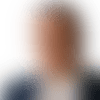The way I evaluate draft picks and the way the league sees them can be very similar at times, but occasionally we have extremely divergent takes. In the early rounds, I like certain draft picks more than others based upon upside or fit, while my favorite late-round picks often revolve around players who I graded to go off the board earlier.
In this article, I take a look at three players from each round of the 2020 NFL Draft who I believe could have substantial impacts on their new teams or have a great chance of eventually outplaying their draft slotting and turning into valuable members of the roster for the organizations that selected them.
Round 1
Jeff Okudah, CB, Ohio State
Drafted: No. 3 overall, Detroit Lions
Hard to find fault in this pick considering the perfect confluence of need and talent in one selection. Okudah is not a finished product by any means, but I like that about him. He is able to make plenty of plays on the ball thanks to his physical gifts, but he's still training his eyes and instincts. Once it all comes together, he could become one of the top lockdown corners in the league.
Jerry Jeudy, WR, Alabama
Drafted: No. 15 overall, Denver Broncos
John Elway isn't just trying to build out a roster; he's trying to build out a roster that can compete with the Kansas City Chiefs. To beat the Chiefs, defense is obviously important, but equally important is having the ability to hit explosive plays and keep up with them if they get on a roll offensively. Jeudy has plus speed and is a James Beard-level route chef who can open wider windows for Drew Lock underneath or down the seam.
Patrick Queen, LB, LSU
Drafted: No. 28 overall, Baltimore Ravens
Of all the linebackers in this draft, Queen feels like the perfect fit for a Ravens team that will benefit from his ability to hunt, cover and tackle with excellent range and toughness. The Ravens were tied for 20th in the league in yards per rush attempt in 2019, but that number will come down with Queen in the middle of the defense helping the Ravens to impose their will even further on opposing offenses.
Round 2
Robert Hunt, T, Louisiana-Lafayette
Drafted: No. 39 overall, Miami Dolphins
While Hunt's name didn't create much media buzz thanks, in part, to an injury that knocked him out of the Senior Bowl and NFL Scouting Combine, there was plenty of interest in him behind multiple socially-distanced and closed doors. He needs technique work but has quality starting potential at right tackle or guard. His size and athleticism make him scheme-independent in the running game and an excellent value pick in the second round.
Jonathan Taylor, RB, Wisconsin
Drafted: No. 41 overall, Indianapolis Colts
When the Colts are at their best, they are playing "bully ball" with a rushing attack that's getting downhill behind a fortified offensive line. The ground-and-pound philosophy can win in the NFL provided the roster is right. The Colts can use Taylor and Marlon Mack in a work-share program that allows both backs to operate with the necessary energy levels to gash defenses in the fourth quarter.
Jaylon Johnson, CB, Utah
Drafted: No. 50 overall, Chicago Bears
Johnson played through much of his senior season with a torn labrum, so he has plenty of toughness to fit into the Midwestern mindset of Chicago. While Johnson has the strength and attitude to handle press man coverage, he also has the instincts and pattern recognition to fit Chicago's varied coverages. The Bears' secondary was one of the worst at taking the football away last season, but Johnson should improve that.
Round 3
Zack Baun, LB, Wisconsin
Drafted: No. 74 overall, New Orleans Saints
Baun hit this list for the pure value of the pick and the talent he possesses. The Saints made a trade up the board to land the hybrid linebacker/pass rusher who may have fallen some, in part, because teams couldn't figure out if he was a 3-4 edge rusher or an off-ball, 4-3 linebacker. While he's still learning to play the off-ball linebacker role, he's aggressive and twitchy to support the run and has the ability to cover man-to-man or bend the edge as a pass rusher.
Bryan Edwards, WR, South Carolina
Drafted: No. 81 overall, Las Vegas Raiders
The bottom line is that the Raiders were able to draft a second-round talent in the middle of the third round thanks to a knee injury followed by a foot injury that prevented teams from having the full athletic testing profile on him. He's extremely tough after the catch, will work the middle of the field with slants into the teeth of the defense and has enough speed to challenge defenders on post routes and verticals.
Devin Asiasi, TE, UCLA
Drafted: No. 91 overall, New England Patriots
I was only eight plays into Asiasi's tape when I began to realize I was watching a Patriot tight end. Asiasi has decent size and just average athleticism, according to his combine testing, but once the tape is on, he plays much bigger, faster and more fluidly than expected. He can attack all three levels of the field with good play speed (average 15.2 yards per catch) and can snare throws way outside his frame to turn an incompletion into a catch. He's not Rob Gronkowski as a blocker, but he does have an opportunity to become Jarrett Stidham's safety blanket in time.
Round 4
Saahdiq Charles, T, LSU
Drafted: No. 108 overall, Washington Redskins
The saying in some scouting circles is that "all sins are forgiven in the fourth round," and that is likely the case here. Charles has Day 2 talent but slipped into the fourth round as his maturity and football character came into question. What I do know from watching tape is that the juice is worth the squeeze in the fourth round. He has starting left tackle potential if a veteran can take him under their wing and improve the maturity level.
Harrison Bryant, TE, Florida Atlantic
Drafted: No. 115 overall, Cleveland Browns
One of my favorite tight ends in this draft, Bryant gets downgraded due to a lack of prototypical size and short arms. The former high school offensive tackle will be an H-back who offers plenty of grit and determination as a blocker, and plays with athletic route movements and plus ball skills despite the short arms. Because of his alignment versatility, Bryant could be a nice fit in Kevin Stefanski's two-tight end or two-back sets and should put additional heat on David Njoku to perform this season.
Amik Robertson, CB, Louisiana Tech
Drafted: No. 139 overall, Las Vegas Raiders
Robertson may not have played in a Power Five conference and he may not be the biggest or fastest cornerback out there, but there simply isn't another cornerback in this entire draft with the ball production or competitive nature that Robertson brings. His instincts and ball skills are off the charts, but he needs to prove he can play from the slot. The fourth round was the expected round for an undersized cover man, it's just that the Raiders may have found their best defensive back in their draft in the middle rounds.
Round 5
Alton Robinson, Edge, Syracuse
Drafted: No. 148 overall, Seattle Seahawks
This year's draft class wasn't very heavy on edge rushers, which is why adding a player with Robinson's size and athletic profile is such great value in the fifth for the Seahawks. For me, his rush traits are more equal to a late third- or early fourth-round pick, but he did have a down season in 2019 relative to his 2018, when he was a second-team All-ACC selection. Doubling up on rushers with Darrell Taylor and Robinson was a very shrewd move by GM John Schneider.
Jake Fromm, QB, Georgia
Drafted: No. 167 overall, Buffalo Bills
Let me get this out in the open right now. I think Jake Fromm's ceiling is low-end starter with a greater chance that he's a good backup. So why is he in my top three picks for Round 5? It has everything to do with what he brings to the QB room. It's a well-known fact that Fromm is a football savant who sees the game like a coach might. Putting him in the room and in the ear of a player with the physical talent of Josh Allen could create ancillary benefits that lead to new heights for this version of the organization.
Isaiah Coulter, WR, Rhode Island
Drafted: No. 171 overall, Houston Texans
I gave Coulter a 6.0 grade which, on our new NFL.com grading scale, is the equivalent to a raw, developmental player who has functional starter upside. While he doesn't have Will Fuller's pure jet-fuel speed, he is fast and has good size and explosiveness. Coulter needs to improve as a route runner and get more aggressive at the catch point, but those are areas that can improve with coaching and execution. He will learn from Brandin Cooks, Will Fuller, Randall Cobb and quarterback Deshaun Watson, which improves the likelihood of this becoming a strong fifth-round pick.
Round 6
Braden Mann, P, Texas A&M
Drafted: No. 191 overall, New York Jets
Yeah, I get it -- you don't want to read about a punter being on a favorite picks list, but too bad. Punters are people, too. The last time I checked, the Jets were first in total punts and only 12th in net average. Punting is a thing for the Jets, so why not get a punter with a monster leg who can flip the field, and who set an NCAA record in 2018 with an average of 51.0 yards per punt? Mann is a quality special teams weapon as a late Day 3 selection.
Isaiah Hodgins, WR, Oregon State
Drafted: No. 207 overall, Buffalo Bills
In the sixth round, teams are just hoping they can either find a skilled player for roster depth or a player with developmental potential who they can bring along at a slower pace. Hodgins isn't fast and he isn't strong, but he does have good short-area quickness for a big receiver and gets plus marks for his pass-catching talent. He doesn't have the traits to be considered an "upside" prospect, but he does have the skill level to potentially become a value pick.
Prince Tega-Wanogho, T, Auburn
Drafted: No. 210 overall, Philadelphia Eagles
While Tega has only been a tackle at Auburn, some offensive line coaches see his bend and hand quickness as predictive traits that could move him inside to guard if needed. The tape can be a little uneven, but it's nowhere near sixth-round tape. He dropped in the draft due to medical concerns surrounding a knee injury he played with last season. He's a latecomer to the sport who is highly athletic and still learning the game. His upside is extremely high for a sixth-round selection.
Round 7
Markus Bailey, LB, Purdue
Drafted: No. 215 overall, Cincinnati Bengals
Bailey is a straight-up, lunch-pail linebacker who is able to chalk up the stat sheet in a variety of columns as a potential three-down linebacker in the middle. While some may see Bailey as overkill, considering how the team also took linebackers in Rounds 3 and 4, I see it as grabbing a good football player who fell in the draft due only to a knee injury suffered last season.
Eno Benjamin, RB, Arizona State
Drafted: No. 222 overall, Arizona Cardinals
This year's draft saw the fewest number of running backs selected (16) since 2010, and my guess is Benjamin fell to the last round simply due to supply and demand at the position. What we do know is that Arizona is a getting a durable, elusive, three-down backup with a feel for operating in shotgun-based rushing attack. Benjamin feels like a lock to make this roster.
Dane Jackson, CB, Pittsburgh
Drafted: No. 239 overall, Buffalo Bills
As you can tell by now, I'm a fan of how the Bills handled Day 3 of their draft. With Jackson, the Bills add a three-year college starter who can crowd routes underneath and plays a competitive brand of football. He doesn't have the speed to match up downfield against vertical threats, but he does have the intangibles and drive that should help him compete for a roster spot in Buffalo.
Follow Lance Zierlein on Twitter @LanceZierlein.












